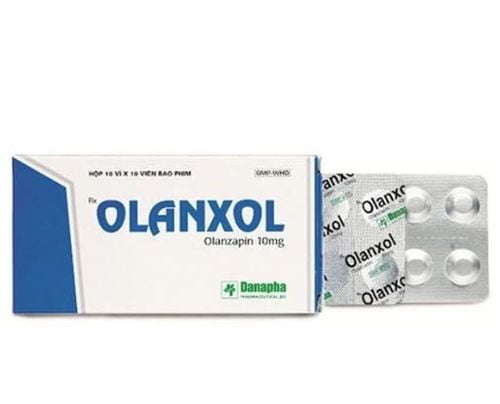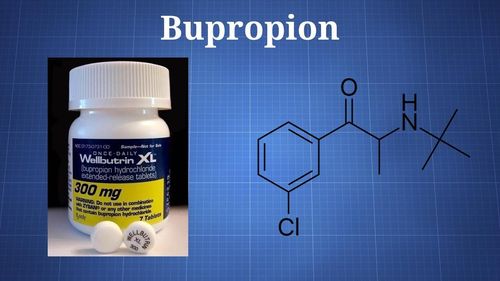This is an automatically translated article.
Aminazin 25mg belongs to the group of antipsychotics and antiemetics. The drug is indicated for the treatment of schizophrenia, bipolar disorder, improving symptoms of nausea, vomiting,...
1. What is the effect of Aminazine 25mg?
Aminazin 25mg is prepared in the form of: Aminazin 25mg injection and Aminazin 25mg tablet. The drug has a composition of Chlorpromazine hydrochloride, indicated in the following cases:
Treatment of all forms of schizophrenia; Treatment of the manic phase of bipolar disorder; Symptomatic treatment of nausea and vomiting; Treatment of intractable hiccups; Preoperative sedation; Treatment of intermittent acute porphyria; Support in the treatment of tetanus. Contraindications to taking Aminazin 25mg:
People with alcohol poisoning, opiates and barbiturates; Patients with a history of agranulocytosis, myasthenia gravis, blood disorders; People at risk of glaucoma due to angle closure, urinary retention due to urethral-prostate disorders.
2. How to take Aminazine 25mg
The drug is prepared in the form of an infusion or film-coated tablets. The article only mentions how to use Aminazin 25mg infusion form. Specifically:
Intramuscular injection: Dilute the solution for injection Aminazin with sodium chloride solution for injection or/and add 2% procaine to prevent irritation at the injection site; Intravenous : Only used in severe hiccups, during surgery or in tetanus. Before injection, the drug should be diluted with sodium chloride injection solution.
3. Dosage of Aminazine 25mg
3.1. Treatment of mental disorders Adults: Intramuscular if severe disorders are present. Initial dose is 25-50mg, can be repeated in 1 hour, then every 3-12 hours, the dose can be increased if necessary. The maximum dose is 1g/day (sometimes it can be gradually increased to 2g/day or more for short-term treatment); Children from 6 months and older: 0.55mg/kg body weight/time, intramuscularly every 6-8 hours. 3.2. Treatment of nausea and vomiting Adults: Intramuscular injection with the first dose is 25mg, then it can be injected from 25-50mg, every 3-4 hours if necessary; Children from 6 months and older: 0.55mg/kg body weight/time, intramuscularly every 6-8 hours. Children under 6 months of age: The dose of saw injection is determined. 3.3. Pre-operative sedation Adults: Intramuscular with a dose of 12.5-25mg, injected about 1-2 hours before surgery; Children from 6 months and older: 0.55mg/kg body weight, intramuscularly 1-2 hours before surgery. 3.4. Treatment of hiccups Adults: Oral or intramuscular with a dose of 25-50mg/time, 3-4 times/day. If intravenous infusion, use a dose of 25 - 50 mg, diluted in 500 - 1,000 ml of sodium chloride injection solution, slowly infused at a rate of 1 ml / min. At the same time, it is necessary to closely monitor blood pressure; Children: Dosage has not been determined. 3.4. Treatment of disorders of porphyrin metabolism Adults: Intramuscularly at a dose of 25mg/time, every 6-8 hours until the patient can be treated with oral drugs; Children: Dosage has not been determined. 3.5. Treatment of tetanus Adults: Intramuscular injection at a dose of 25-50mg/time x 3-4 times/day. Dosage can be increased gradually if necessary. If intravenous infusion, use a dose of 25-50mg diluted to a concentration of at least 1mg/ml with sodium chloride injection solution, infused at a rate of 1ml/min; Children: Intramuscular or intravenous infusion at a dose of 0.55m/kg body weight, every 6-8 hours.
4. In case of overdose and missed dose
4.1.Overdose When taking Aminazin 25mg overdose, the patient should immediately notify the doctor or go to the nearest medical facility if there are abnormal symptoms such as headache, nausea, vomiting, dizziness, ...
4.2. Missed dose If a dose is missed, the patient should take it as soon as he remembers. However, if it is almost time for your next dose, skip the missed dose and continue with your usual dosing schedule.
5. Side effects of Aminazine 25mg
The side effects of Aminazin 25mg include:
Drowsiness, lethargy, restlessness, anxiety, nervousness; Dragging gait, unusual movements, slow or uncontrollable walking; Difficulty sleeping or having trouble staying asleep; Appetite, weight gain, breast enlargement, lactation, amenorrhea, sexual dysfunction; Change in skin color, swelling of the nose, dry mouth, difficulty urinating, narrowed or dilated pupils; Fever, flu-like symptoms, sore throat, chills; muscle stiffness, confusion, fast or irregular heartbeat; Excessive sweating, yellowing of the skin or eyes; Unusual bleeding or bruising on the skin, neck pain, tongue protruding from the mouth; Throat blockage, trouble swallowing, trouble breathing, seizures, uncontrolled mouth, face, or jaw movements; Skin blistering, rash, urticaria, itchy skin; Swelling of the eyes, face, mouth, tongue, throat, lips, arms, hands, feet, legs, ankles; Loss of vision (especially at night), seeing things as brown. Patients should immediately notify the doctor if the side effects become serious for timely intervention.
5. Be careful when using Aminazine 25mg
Before taking Aminazin 25mg, the patient should tell the doctor if:
You are allergic to chlorpromazine drugs; phenothiazines such as fluphenazine, perphenazine, prochlorperazine, promethazine, thioridazine, trifluoperazine, medications you are taking or plan to take; You have or have ever had asthma, emphysema, infection of the lungs or bronchial tubes, breast cancer, glaucoma, pheochromocytoma, abnormal EEG, seizures, heart disease, liver or kidney disease, predisposing factors. affect the production of blood cells by the bone marrow; You have dementia, brain damage: Because anticholinergic drugs will cause harmful effects on the central nervous system in these subjects; Pregnant women: Taking Aminazin 25mg or other neuroleptic drugs during the third trimester of pregnancy can cause negative neurological side effects for the neonate. Therefore, the drug should be avoided in the last 3 months of pregnancy; Breast-feeding women: Because the chlorpromazine component in the drug can be excreted in breast milk, causing harm to the nursing infant, if the mother takes Aminazin, she should stop breastfeeding; Elderly: Reduce the dose when taking the drug to reduce the risk of side effects, usually only 25-50% of the adult dose.
6. Drug Interactions Aminazine 25mg
Drug interactions can reduce the effectiveness or increase side effects of the drug. Some drug interactions of Aminazin 25mg include:
Combined use of phenothiazines with drugs that cause CNS depressants such as tricyclic antidepressants, sedatives, alcohol, opiates, antihistamines,. .. increases respiratory depression and increases central nervous system depression; The barbiturates will increase the metabolism of chlorpromazine in the liver, reduce the drug concentration in the blood plasma, leading to a decrease in the therapeutic effect; If concomitant use with tricyclic antidepressants, antiparkinsonian drugs or antihistamines may increase the anticholinergic effects; The use of adrenaline to treat hypotension caused by phenothiazines may further lower blood pressure because the alpha - adrenergic effects of adrenaline can be blocked, leaving only beta stimulation, causing severe hypotension, causing heart palpitations. fast; Concomitant use of antipsychotics with tricyclic antidepressants or with lithium may increase neurotoxicity; Concomitant use of antipsychotics and tricyclic antidepressants may decrease metabolism and increase toxicity of both drugs. When using Aminazin 25mg, the patient should follow all instructions of the doctor about the dose, how to use, the time to take the drug. If experiencing adverse side effects, patients should notify their doctor immediately for timely support and treatment. At the same time, when taking other drugs or having health problems, patients also need to share with their doctor to avoid the risk of drug interactions.
Please dial HOTLINE for more information or register for an appointment HERE. Download MyVinmec app to make appointments faster and to manage your bookings easily.













